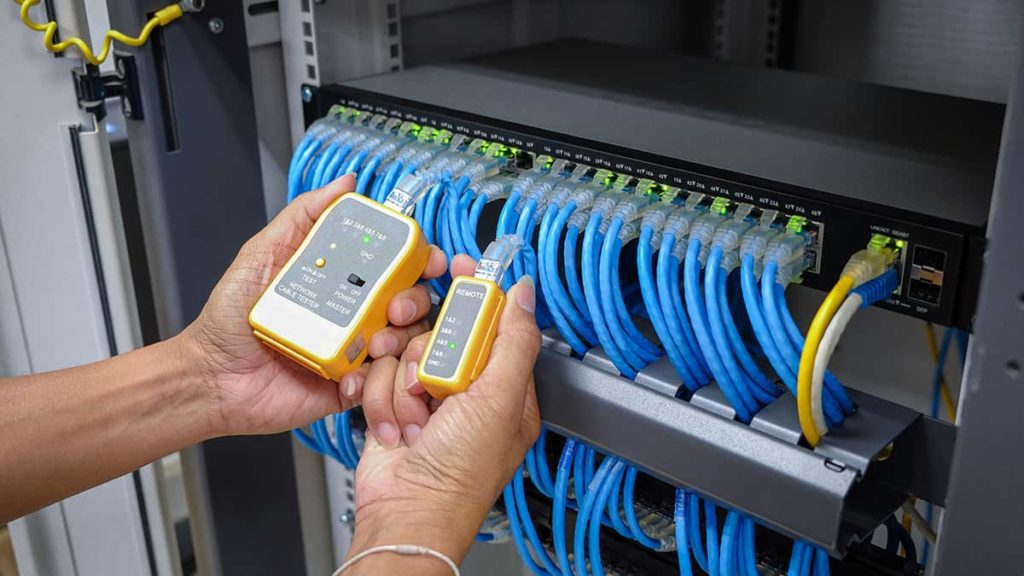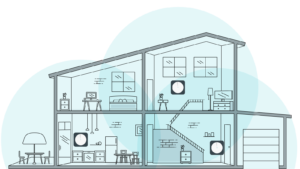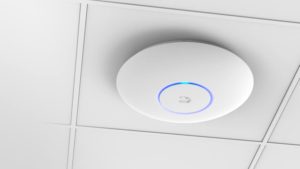Network cable installations need to be properly designed, considered and mapped out before proceeding. Network cables are designed to transfer data and information to and from computers, switches, storage networks, and routers. There are many different types of communication cables available. Which cables are suitable for your situation depends on many different factors, such as the nature of your overall system and your specific requirements. Twisted pair cables are the most commonly used cables for companies, including companies operating in industries such as retail and commercial.
Twisted pair cable is used in many Ethernet networks. This cable has four pairs of wires. The pairs alternate with many other revolutions. They are twisted here to prevent interference with other cables and devices.
History
Although digital communication seems to be a relatively new concept, its history dates back to 1844. That was the year Samuel Morse opened the telegraph and used it to send a message from Washington DC to Baltimore at a distance of 37 kilometers. Although the nature and capabilities of digital communication have changed dramatically over the years, there are many similarities between the invention of Morse and today’s state-of-the-art systems. In the middle of the 19th century, it was possible to go through about four or five commas per second, the current speed of up to 10 Gpbs meant ten million zeros, and computers could report one second every second.
Over the last four decades, digital communication has evolved at a remarkable pace. As the demand for high-speed communications grew and grew, the greater need for more powerful cabling and hardware became apparent. Ethernet was first developed by David Boggs and Robert Metcalf of Xerox Corp. in California. In 1979, Xerox teamed up with Intel and DEC to standardize and further develop Ethernet solutions. The specification was unveiled in 1980. It was called the Ethernet Blue Book and was also called the DIX standard and required implementation speeds of up to 10 Mpbs. Although we can now reach 10 Gp / s, it will have to continue to grow, with copper-based cables no longer being used and designed to provide even higher speeds.
Ethernet
Ethernet is the most common type of local area network today. Local area networks are networks of computers located in rooms, buildings and campuses. WAN stands for Wide Area Network and covers many areas. Ethernet controls the amount of data transmitted over a LAN and is also officially known as the IEEE 802.3 protocol.
When LAN machines want to send data to other computers or devices, they may feel that the carrier or cable connects the machines to see if it is free and not currently being used on other devices. If the data packet is already on the network, the device holds it until it can send it. All other devices check the package to see if the package is for them.
How long is the cabling?
Network cable installations are a long-term cost. It can take 15-20 years to replace the cable. The network equipment you need for your digital communication needs to be replaced about three or four times before your cable system reaches the end of its life. Cabling will usually reimburse you about 15% of the total network cost. By investing in the right cabling solutions for your needs, you can reduce downtime, reduce maintenance and enjoy better performance.
Copper cable and mixed networks
Although copper may seem expensive, it is more reliable than in the past due to advances in technology. Not so long ago, it was first used for short-distance networks, but the 10 GB speed it can provide means that its popularity has grown significantly in recent years. Many of our clients have opted for mixed networks, which include copper cables and fiberglass wires. If you have questions about whether copper is right for you, seek specialized advice based on your specific circumstances and budget.
Fiber optic cables are often used in high bandwidth environments, such as data centers, banks, and hospitals, although more and more companies in various industries are choosing to install fiber optics. network cable due to the large amount of data it has. These days network cable installations focus heavily on fibre optic installations as well.
Fibre Optic Cabling
Fiber optic cables can connect CCTV systems, broadband, telephones and computer networks and are often considered a faster and more reliable alternative to copper. It has the ability to transfer large amounts of data, making it an ideal choice for a variety of large organizations. Another good reason to choose fiber optic cables is that they can provide cleaner phones due to reduced signal degradation. Fiber optic cables have low power consumption requirements and high load capacity.
Network cable installation considerations
You need to think carefully about which cable installation services are right for you to avoid an investment that you might regret later. It is always wise to carefully consider your long-term needs as well as current needs. Your cabling choices are always likely to be strongly influenced by the type of network you operate.
There are a number of technical factors to consider when considering your current infrastructure. This includes the maximum distance between your network switches and the device that is farthest from them. You need to think about the bend radius and the amount of space you can use to route the ceiling and floor cables, and whether there are any abandoned or existing cables that need to be removed. Electromagnetic interference such as EMI must be considered. While both copper and fiberglass can provide high quality data transmission, factors such as price, distance, bandwidth, your current network, and future needs can play a big role in determining the options available.
CAT7 cabling
Category 7 cabling is a form of cabling used for Gigabit Ethernet and can provide efficiencies of up to 600 MHz. This is ideal for smart homes and businesses looking for the highest standard of performance they can use. CAT7 differs from its predecessors such as CAT 5 and CAT 6 for many reasons. One of the main reasons for choosing CAT7 is that its twisted pairs are protected, which means you can expect better sound resistance if you choose this solution. While CAT7 can be expensive, and therefore more than many budgets, if you have the capital to save, you can expect a very good return on investment and many years of efficiency in the future if possible.
If you already have CAT 7, you can forget about the cost and hassle of switching cables so you can encounter new innovations and features in the future. CAT7 also offers higher power and lower voltage drop. It has a wide copper cross-section and its individual cores are better handled. Not only is each pair of conductors protected, but a common shield is also built into the conductors. At the time of writing, you will usually have to pay approximately GBP 180 for 250m for CAT7 cabling. Because CAT7 is relatively resilient to the future, you don’t have to worry about the hassle, the cost of the difficulty of opening the walls to meet the new cables many years after installation. CAT7 gives you the least noise and crosstalk, backwards compatible, gives you more bandwidth and longer and longer life. If CAT7 has disadvantages, they are more suitable for offices than homes, they can be expensive depending on your budget and more difficult to install. CAT6 cables
If you find CAT7 cabling too expensive or inconvenient, you can opt for CAT6. CAT6 offers a number of benefits, including the way it meets most household needs and is backward compatible. It is also easy to install and is slightly cheaper than CAT7. Some of the disadvantages associated with installing a CAT 6 cable are that it can sometimes suck in cold air through cracks in the ceilings and can provide carbon monoxide backflow.
CAT 6 Cabling
CAT6 has always been considered one of the best solutions for home customers because it can provide all the speed you need to perform everyday tasks such as downloading, streaming and playing. It can also be considered a useful solution for small to medium-sized office environments. There are two types of CAT6, which are standard CAT6 and CAT6A. CAT6 will usually cost you 50% more than CAT5, while CAT6A will cost you 50% more than CAT6. CAT6A is designed for tighter conductors and also has separation between wires, so crosstalk can be reduced or eliminated and insulation can be improved. Modular connections are often required to connect cables. You can expect CAT6 cables to last about ten years before damage and more frequent errors occur. The method of separating the wires in the cable is considered a major innovation, and CAT6A is known for even greater improvements in noise reduction. Because it is backward compatible with CAT6, it can work with any CAT4 or higher cable. This means that you do not need to upgrade any devices when upgrading cables. While CAT5 has the ability to support connection speeds, CAT6 is indeed demonstrably compatible with Ethernet connections. Cat5 cabling
CAT 5 Cabling
Although CAT5 looks like an old hat, there are many good reasons to choose this solution, including excellent cost recovery. There are two types of CAT5, which include standard CAT5 and CAT5E. CAT5E was first launched in 2001, when CAT3 was still a popular choice. CAT5, CAT6, and CAT7 cables all have a standard Ethernet plug that fits most computers, routers, and switches, but there are many differences between the three. You can expect more than 30% savings when choosing CAT5 instead of standard CAT6 and 60% when choosing CAT5 before CAT6E, making it the ideal solution for most people on a tight budget.
How can we help?
Soft Edge Solutions provide network cable installations and WiFi installations in the Johannesburg, Pretoria and Gauteng areas



